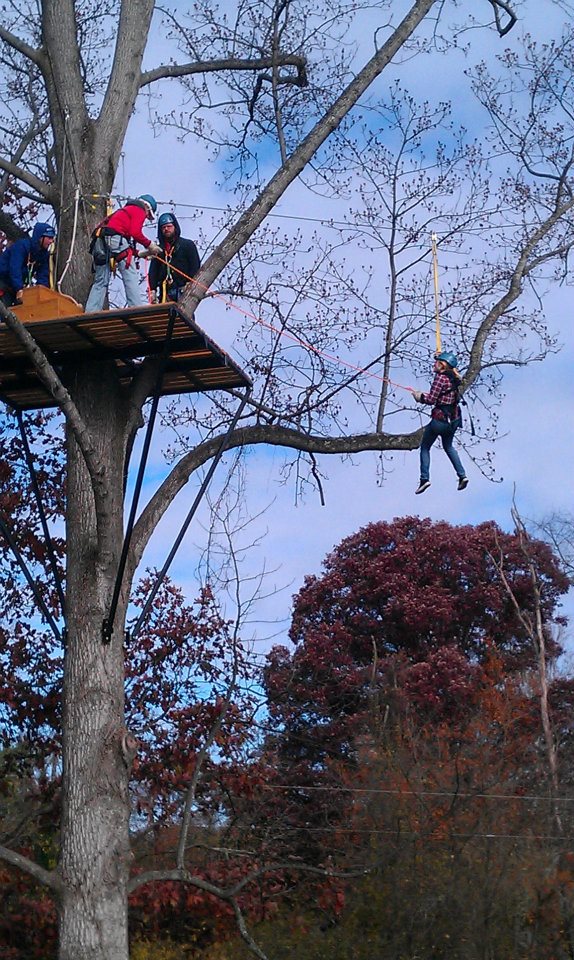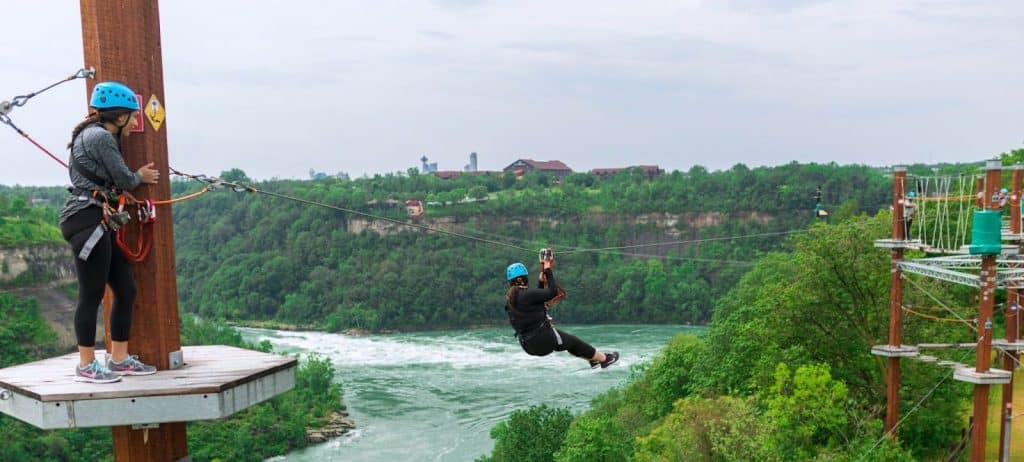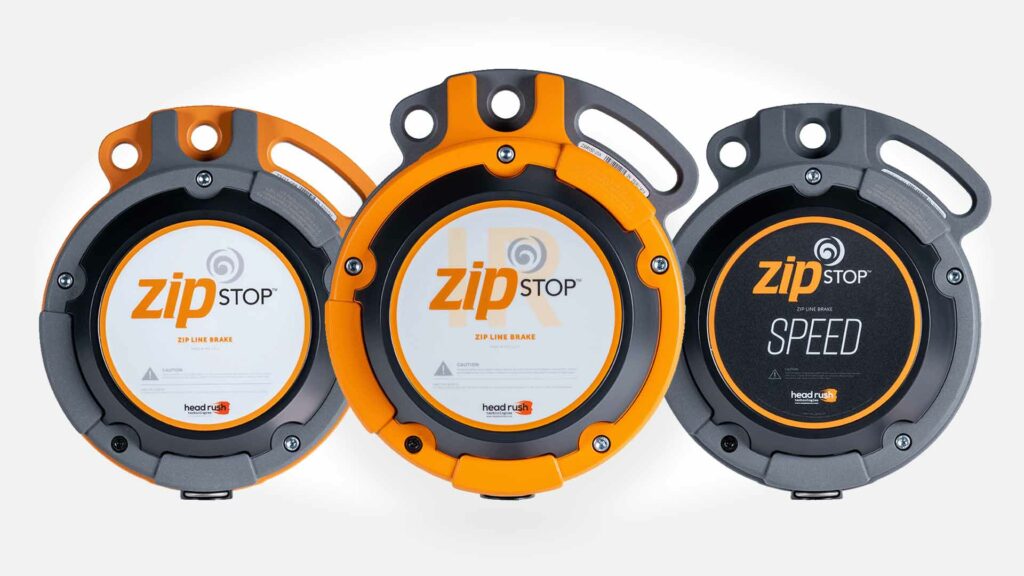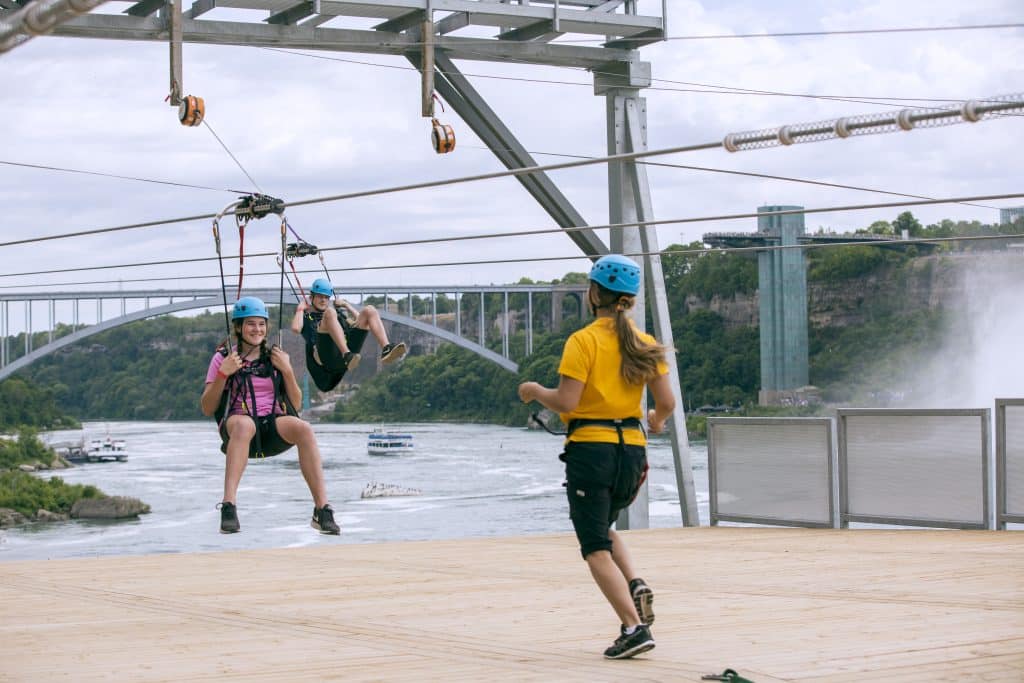Modern zipline courses have come a long way in recent years. With customers clamoring for ever-longer and faster rides, zipline operators have turned what was once a simple formula – a platform, a cable, a ladder for retrieving dangling riders – into a carefully calculated engineering achievement. In fact, if you are just starting out, we highly recommend hiring a zipline installation company that specializes in designing and building modern zipline courses.
View: Preferred Zipline Installer List
When designing a new zipline, a trained zip line installer will account for a variety of elements, including the angle and length of the cable, the weight range of the riders, the impact of the ball bearings in the zipline trolleys, and the arrival speed of different people and different trolley types as they come into the platform.
To make things more complicated, nearly all zipline tours take place outdoors, which means that installers also must adjust their calculations based on potential weather conditions. If there’s a headwind, will lighter riders reach the platform or get stuck and require a lengthy rescue operation? Conversely, if there’s a tailwind, will heavier riders overshoot the landing platform, potentially damaging themselves, their guides, or the zip line itself?
These are all safety essentials that professional zip line operators should factor into their initial calculations. Other aspects such as part durability, weather-resistance, wear over time, and maintenance requirements also play significant roles when choosing what to include in your zip line course.
Of course, with every zipline course there are also financial considerations to take into account. As is often the case in the adventure industry, these considerations extend beyond the core financials to the limitations of physical equipment that you are relying upon to provide that experience. Without the right equipment, you can't provide a high-quality product.
Over the span of a multi-line zipline course, even subtle shifts in throughput can make a dramatic impact on the overall user experience.
For example, the original gravity braking system that was predominant in the early days of ziplining has largely gone extinct in commercial applications. Why? When using a U-shaped line with a gravity braking system, some riders will not reach the exit platform, resulting in major delays. Even though the materials to build such a line were relatively cheap and accessible, the retrieval process for rescuing so many stranded riders not only cost the guides a great deal of time and effort, but also prevented other riders from being able to access the zipline.
In other words, the throughput was so terrible that it hampered the financial viability of this style of zipline. Obviously, that’s an extreme example. Professional zipline courses are far more sophisticated these days; however, over the span of a multi-line zipline course, even subtle shifts in throughput can make a dramatic impact on the overall user experience, as well as the number of customers that a busy zipline course can potentially serve on a daily basis.




